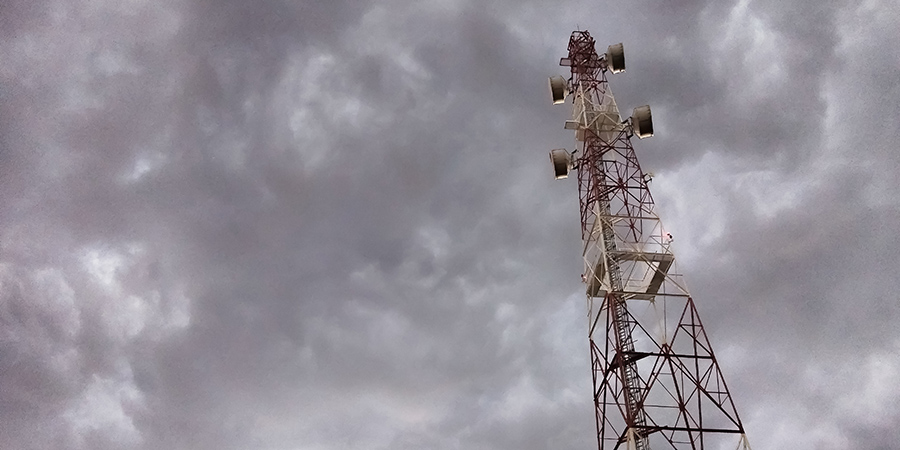The Asia Pacific is highly susceptible to natural disasters, including earthquakes, tsunamis, typhoons, and floods. The impact of these disasters is often devastating, leading to significant loss of life and property. In such scenarios, effective disaster management becomes crucial. Telecom infrastructure plays a crucial role in disaster management by enabling communication, coordination, and timely response.
One of the most critical aspects of disaster management is the ability to provide early warnings to the population at risk. Telecom infrastructure, including mobile networks, satellite communications, and the internet, forms the backbone of early warning systems. These systems rely on the rapid dissemination of information to alert communities about impending disasters, allowing them to take necessary precautions and evacuate if needed. For instance, during the 2004 Indian Ocean tsunami, the lack of an effective communication system resulted in a significant loss of life. In contrast, countries like Japan have developed robust early warning systems that utilize telecom networks to provide real-time alerts about earthquakes and tsunamis, thereby reducing casualties.
Emergency Communication
During, and after, a disaster, communication networks are often the first to be disrupted, thus, maintaining communication lines is essential for coordinating rescue and relief operations. Telecom infrastructure enables emergency responders to communicate with each other and with affected communities. Mobile networks, satellite phones, and radio communications ensure that information flows seamlessly, even when traditional infrastructure is compromised. For example, after the 2015 Nepal earthquake, telecom operators quickly restored mobile networks, which played a fundamental role in coordinating rescue efforts and delivering aid.
Effective disaster management requires coordinated efforts among various agencies, including government bodies, non-governmental organizations (NGOs), and international aid agencies. Telecom infrastructure facilitates the coordination of these efforts by providing reliable communication channels. Real-time data sharing and communication enables better resource allocation, ensuring that aid reaches the most affected areas promptly. During Typhoon Haiyan in the Philippines, telecom networks were instrumental in coordinating the massive international relief effort, highlighting the importance of telecom infrastructure in disaster management.
Read More: How Cloud Services Revolutionized Data Storage and Management
Telecom Infrastructure in Disaster Management
Telecom infrastructure itself is vulnerable to natural disasters. Earthquakes, floods, and typhoons can damage cell towers, cables, and other critical components, leading to communication blackouts. For instance, during the 2011 Tōhoku earthquake and tsunami in Japan, many communication networks were severely disrupted, hampering rescue operations. The challenge lies in building resilient infrastructure that can withstand the impact of disasters and continue to function effectively.
Telecom companies are significantly contributing to disaster mitigation through innovative technologies and strategic initiatives. A Japanese consortium's investment in AALTO aims to accelerate High Altitude Platform Station (HAPS) technology, which promises to enhance connectivity during disasters. Similarly, the Department of Telecommunications (DoT) is exploring the use of balloons and drones to ensure 5G connectivity in emergencies, ensuring robust communication networks when they are needed most.
AALTO's Zephyr project is set to revolutionize global connectivity, offering critical support for disaster aid and border control through advanced technological solutions. In India, the government plans to geo-tag key telecom infrastructure, such as towers and optical fiber cables, to facilitate efficient coordination and response during disasters.
In Thailand, AIS and True Corp. are collaborating to launch an emergency cell broadcast service, while True Corporation has already established an AI-powered Business and Network Intelligence Center. This center is designed to send out instant alerts in the event of service-related incidents or disasters, ensuring timely and effective communication. Additionally, Thailand's Ministry of Digital Economy and Society has finalized a proposal for a cell broadcast emergency warning system, further strengthening the country's disaster response capabilities.
Technological Limitations
While advancements in technology have improved telecom infrastructure, there are still limitations that need to be addressed. Network congestion during disasters is a common issue, as a sudden surge in communication can overwhelm existing infrastructure. Additionally, interoperability between different communication systems used by various agencies can be problematic. Standardizing communication protocols and investing in advanced technologies like 5G and satellite communications can help mitigate these challenges.
Governments and private sector stakeholders need to invest in building resilient telecom infrastructure that can withstand natural disasters. This includes constructing earthquake-resistant cell towers, underground cables to protect against floods, and robust satellite systems that provide uninterrupted communication. For example, Japan's NTT DOCOMO has developed disaster-resistant base stations that continue to operate even during earthquakes and tsunamis, ensuring continuous communication.
Satellite communications provide reliable communication links when terrestrial networks are disrupted. They are essential for early warning systems, emergency communication, and coordinating relief efforts. Investing in satellite technology and integrating it with existing telecom infrastructure can enhance the overall resilience of communication networks. The Asia Pacific has seen significant advancements in this area, with countries like India and China launching dedicated satellites for disaster management.
Latest Exclusive Coverage: GTI Summit-Shanghai 2024: Futuristic Technologies and Innovation
Building Resilience in Telecommunications
Japan is a prime example of a country that has invested heavily in telecom infrastructure to enhance disaster management. The country's early warning system for earthquakes and tsunamis relies on a network of sensors and communication channels that provide real-time alerts to residents. Telecom operators have developed disaster-resistant infrastructure, ensuring that communication networks remain operational even during major disasters. The 2011 Tōhoku earthquake and tsunami highlighted the effectiveness of these measures, as early warnings allowed many people to evacuate to safer areas.
Meanwhile, the response to Typhoon Haiyan in the Philippines stresses the critical role telecom infrastructure plays in disaster management. The typhoon caused widespread devastation, and communication networks were severely impacted. However, telecom operators, with support from international organizations, quickly restored mobile networks, enabling effective coordination of rescue and relief efforts. Satellite communications were also utilized to provide connectivity in the hardest-hit areas, demonstrating the importance of a multi-faceted approach to disaster managements.
Australia's STAND program is a collaborative effort between the government and telecom operators that aims to enhance the resilience of telecom infrastructure in the wake of natural disasters. The program includes measures such as installing backup power systems for mobile base stations, deploying portable satellite equipment, and improving network redundancy. These efforts have significantly improved the ability of telecom networks to withstand and recover from natural disasters, ensuring that communication remains available during emergencies.
Also Read: Empowering Smart Cities in Asia with Edge Computing
Telecom Review Asia Analysis: Assessing the Role of Public-Private Partnerships in Telecom Infrastructure Development






